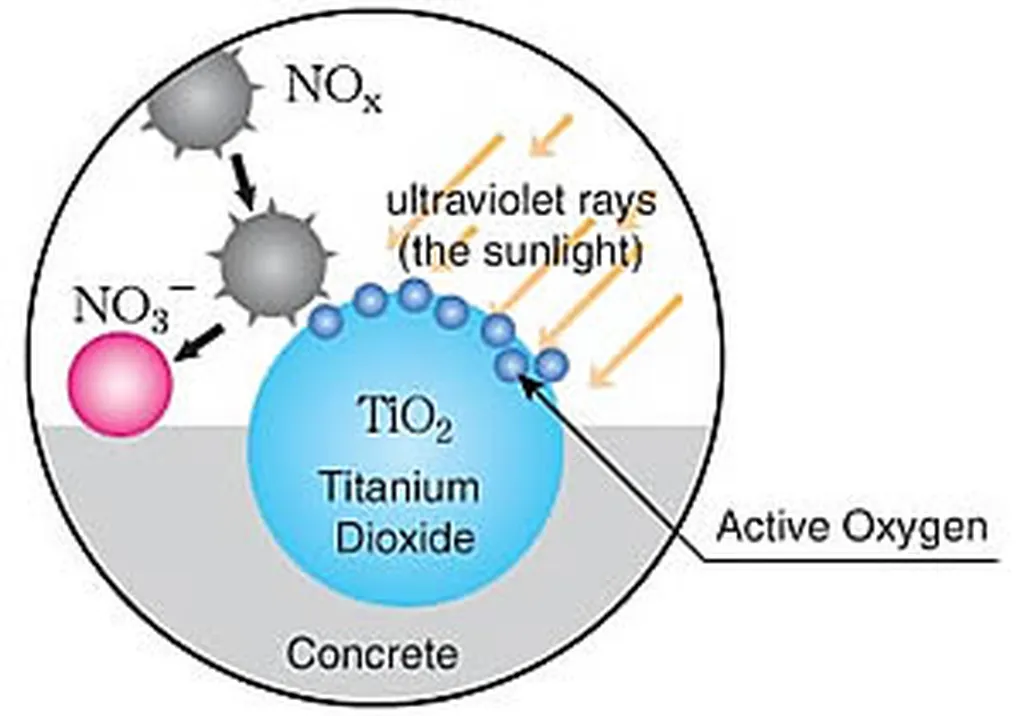In the quest to develop smarter, more sustainable building materials, researchers have turned to the sun for inspiration. A recent study published in *Нанотехнологии в строительстве* (Nanotechnologies in Construction) explores how the phase composition of titanium dioxide (TiO2) can enhance the photocatalytic activity of self-cleaning concrete, offering promising implications for the construction and energy sectors.
At the heart of this research is the quest to optimize the functional properties of TiO2, a widely used photocatalytic additive in self-cleaning concrete. The study, led by Artemy S. Balykov of the National Research Mordovia State University in Saransk, Russia, investigated how different polymorphic forms of TiO2—anatase, brookite, and rutile—affect its ability to degrade organic pollutants under both artificial ultraviolet and natural solar radiation.
The findings reveal a nuanced interplay between the phases of TiO2 and its photocatalytic efficiency. “We found that the presence of anatase significantly boosts photoactivity under UV light, while a balanced mix of anatase, brookite, and rutile enhances performance under daylight conditions,” Balykov explained. This discovery highlights the potential for tailored synthesis of TiO2 to maximize its effectiveness in real-world applications.
The study employed four TiO2 samples, including two industrial samples and two synthesized via a sol-gel method involving hydrolysis of titanium alkoxide in an acidified water-alcoholic medium, followed by calcination at 500 °C. X-ray powder diffractometry was used to analyze the structural parameters, while the oxidative degradation of methylene blue under UV and daylight exposure served as a model reaction to assess photocatalytic activity.
One of the most compelling findings was the synergistic effect observed when multiple polymorphs of TiO2 were present, particularly when anatase predominated. This combination facilitated the formation of type-II semiconductor heterojunctions, improving the spatial separation of charge carriers and reducing the recombination rate of photogenerated electron-hole pairs. “The heterostructures allowed us to achieve a significant increase in photocatalytic activity under solar radiation,” Balykov noted.
The implications of this research extend beyond self-cleaning concrete. In the energy sector, the development of more efficient photocatalysts could lead to advancements in solar energy conversion and environmental remediation technologies. By fine-tuning the phase composition of TiO2, researchers can create materials that harness solar energy more effectively, potentially reducing the need for energy-intensive cleaning processes and contributing to more sustainable construction practices.
As the construction industry continues to seek innovative solutions for sustainability, the insights from this study offer a promising path forward. By leveraging the unique properties of TiO2 polymorphs, developers can create building materials that are not only self-cleaning but also energy-efficient and environmentally friendly. The research underscores the importance of targeted regulation of phase composition in photocatalytic modifiers, paving the way for future advancements in the field.
For professionals in the construction and energy sectors, this study serves as a reminder of the potential that lies in the intersection of materials science and renewable energy. As Balykov and his team continue to explore the possibilities, the future of self-cleaning concrete and beyond looks increasingly bright.

